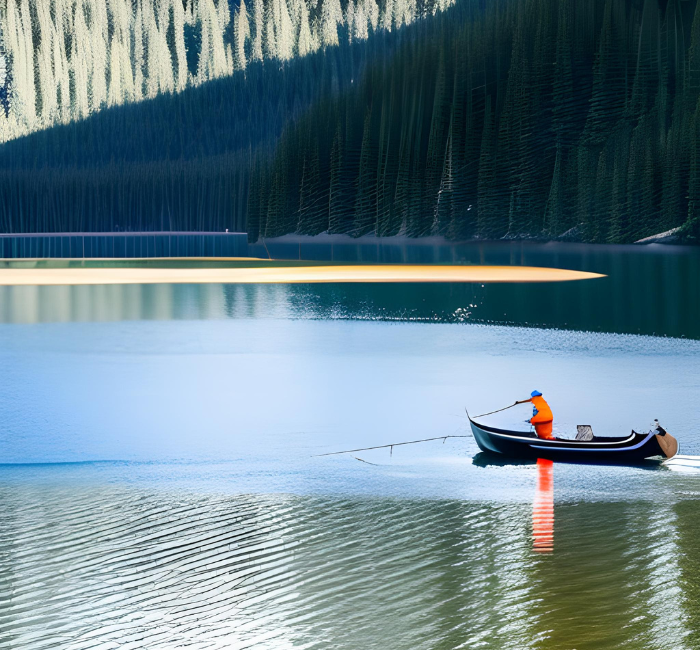Freshwater fishing offers a diverse range of experiences, from the tranquil banks of rivers to the vast expanses of lakes and the intimate settings of ponds. Each environment presents unique challenges and opportunities for anglers. In this comprehensive guide, we’ll delve into the art of freshwater fishing, focusing on three subcategories: river fishing, lake fishing, and pond fishing. Whether you’re a novice angler or a seasoned pro, this article will provide valuable insights, techniques, and tips to enhance your fishing adventures and increase your chances of success.

River Fishing:
River fishing is a thrilling and dynamic form of freshwater angling. The swift currents and varied structure of rivers make them home to a wide range of fish species. In this section, we’ll explore essential river fishing techniques, including:
- Understanding River Dynamics: Learn how to read currents, identify productive fishing spots, and locate underwater structures where fish congregate.
- Casting Techniques: Discover different casting methods, such as upstream and downstream casting, as well as strategies for presenting bait or lures effectively.
- Bait and Lure Selection: Explore the most effective baits and lures for river fishing, considering factors such as water clarity, seasonality, and target species.
- Rigging Options: Explore rigging setups like the Carolina rig, Texas rig, and drop shot rig, suitable for river fishing scenarios.
Lake Fishing:
Lakes provide vast opportunities for freshwater anglers. They encompass a wide range of sizes and depths, offering diverse ecosystems and a multitude of fish species. In this section, we’ll delve into lake fishing techniques, including:
- Locating Fish: Understand how to identify key areas in lakes, such as weed beds, drop-offs, and underwater structures, where fish tend to congregate.
- Boat and Shore Fishing Strategies: Explore the advantages and considerations for both boat-based and shore-based fishing approaches, including techniques like trolling, casting, and drift fishing.
- Seasonal Considerations: Learn how seasons impact fish behavior in lakes and adjust your fishing techniques accordingly.
- Selecting Baits and Lures: Discover effective bait and lure options for lake fishing, taking into account the preferences and feeding habits of different fish species.
Pond Fishing:
Ponds offer a more intimate and accessible setting for freshwater fishing. With their smaller size and calmer waters, ponds are ideal for beginners and those seeking a peaceful angling experience. In this section, we’ll cover pond fishing techniques, including:
- Spot Selection: Learn how to identify productive areas in ponds, such as shallows, submerged structures, and vegetation patches.
- Bait Presentation: Explore techniques for presenting baits and lures effectively in ponds, including bobber fishing, bottom fishing, and topwater fishing.
- Understanding Pond Ecosystems: Gain insights into the unique dynamics of ponds, including the impact of temperature, oxygen levels, and seasonal changes on fish behavior.
- Targeting Panfish and Bass: Focus on popular pond species like panfish (bluegill, crappie) and bass (largemouth, smallmouth) and the specific techniques and baits that yield success.
Conclusion:
Freshwater fishing encompasses an incredible range of experiences, from the rushing currents of rivers to the vastness of lakes and the serenity of ponds. By exploring the subcategories of river, lake, and pond fishing, anglers can uncover new challenges and opportunities. Mastering the techniques and approaches specific to each environment will enhance your angling skills and increase the likelihood of memorable catches. So, grab your gear, study the waters, and embark on thrilling freshwater fishing adventures as you explore the wonders of rivers, lakes, and ponds.
